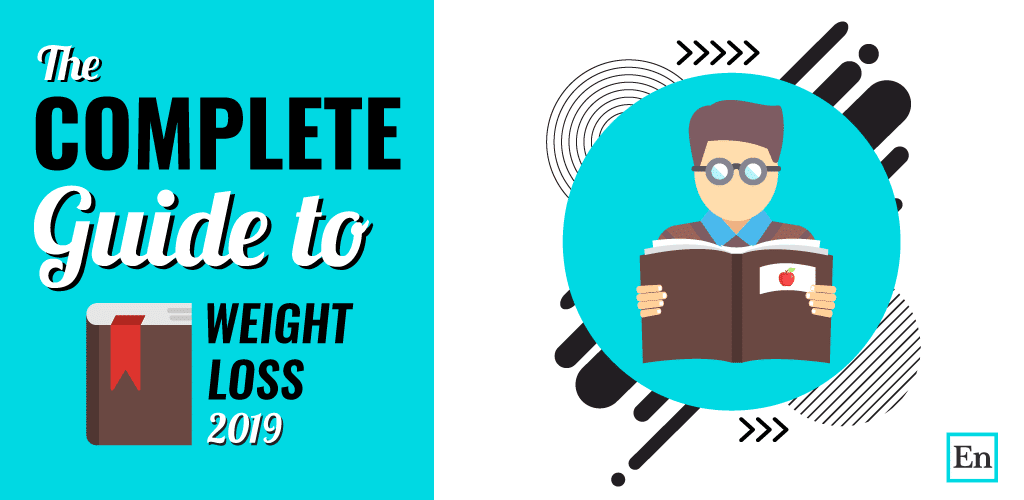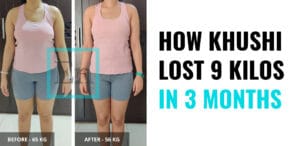The internet often makes weight loss seem a lot more complicated than it really is. There are multiple strategies to lose weight but often we get so tied up in the specifics that we ignore the basics. So, in this post, I am going to ask you to take a step back and focus on the basics of how to lose weight.
Understanding Weight Gain
Weight gain doesn’t magically happen overnight. It’s an outcome of following an unhealthy lifestyle and eating too much for too long. When you eat more than your requirements your body stores calories from the excess food as fat. This is an evolutionary adaptation which was very useful to us during our hunter-gatherer times when food was scarce. But now it is responsible for making us overweight.
Calorie Deficit

If eating more calories than you burn leads to weight gain, then doing the opposite will help you lose weight i.e. you need to be in a calorie deficit. This forces your body to use the stored fat to create energy.
If there’s no deficit, you will not lose weight, period.
This does NOT mean that you should starve yourself to create a calorie deficit! Yes, starving does create a calorie deficit but it is not a healthy way to lose weight.
There’re many ways by which you can create a deficit in your diet, here are a few of them –
1. Reduce processed foods

This is a no brainer. Processed foods are the biggest contributors to calories in modern-day diets. And rightly so, they are addictive and easily available. The more you eat them the more you crave them. The red dotted line in the GIF above represents the number of calories you need to eat every day to maintain weight. Reducing processed food intake brings down the number of calories you are eating, thus putting you in a deficit.
Many of my clients lose up to 4 kilos in just the first week of their nutrition programs after giving up processed foods. If you’re getting most of your excess calories from processed food then eliminating them will create a large calorie deficit.
2. Skip a Meal

If you are someone who easily overeats, then you might want to skip a meal. This will reduce the number of over-eating opportunities which you offer yourself. Additionally, eliminating a meal also puts you in a deficit without counting calories. I’d recommend eliminating just one meal to avoid feeling fatigued. So if you are someone who eats 3 meals a day (breakfast, lunch and dinner), then you can reduce that to just 2 meals a day by skipping breakfast.
3. Increasing Meal Satiety
Satiety measures how full you feel after eating and it is a very undervalued component of weight loss. Eating satiating meals makes you feel full for longer, reducing the chances of snacking/overeating.
Since satiety is affected by a lot of factors, there are a lot of ways by which you can increase satiety. I am going to show you two of the easiest ways to boost satiety –
Increase Fibre intake – Fibre is the indigestible portion found in plant-foods. Since it is indigestible it stays in the stomach for longer which keeps you fuller. Eating more fruits and vegetables will increase fibre intake. Plus, eating more fibre has a lot more benefits than just improving satiety. Aim to eat between 25-30g of fibre a day.
Increase protein intake – Including more protein in your diet will help you feel more satiated during the day. There is a lot of research to support this. Additionally, when you put yourself on a caloric deficit there’s a good chance that you may lose some muscle mass along with fat. Eating more protein will ensure that you at least reduce the amount of muscle lost during this time. Aim to eat between than 1.2 -2.0 g/kg of protein. If you exercise then I’d recommend the higher end of this range to support recovery and maintain muscle mass.
4. Increase Activity Levels
The methods above were focused on reducing calorie intake to create a caloric deficit. However, you can also create a caloric deficit by increasing your activity levels. Broadly, there are 2 types of activity –
- Exercise Activity
- Non-Exercise Activity
This might be the first time you have heard of Non-Exercise Activity. It consists of all those activities which aren’t classified as exercise such as – walking, fidgeting, talking, carrying shopping bags etc. The calories burnt performing a non-exercise activity is known as Non-Exercise Activity Thermogenesis (NEAT).
We exercise only for a limited amount of time, but you have a lot more opportunities to increase NEAT throughout the day. Therefore, if you are sedentary and trying to lose weight, you should initially spend more effort to increase NEAT.
How do you increase NEAT?
Clearly, a lot of activities fall under this category and you can’t possibly hope to increase NEAT by gossiping more (as enjoyable as that is). Here are a few practical ways by which you can increase NEAT –

- Increasing your total step count during the day by using a fitness band
- Taking the stairs at work
- Getting up while watching TV to fetch a glass of water (instead of asking your mom)
- Dusting your house
5. Combining Strategies

Weight Loss Isn’t Complicated!
The internet is confusing, with different sources saying completely opposite things about what’s good and what’s bad for health. At Element Nutrition, we take the guesswork out of nutrition by backing our recommendations with the latest research.
Interested? Give us a call and get a 10% off on your first nutrition plan!





10 Responses
Comments are closed.